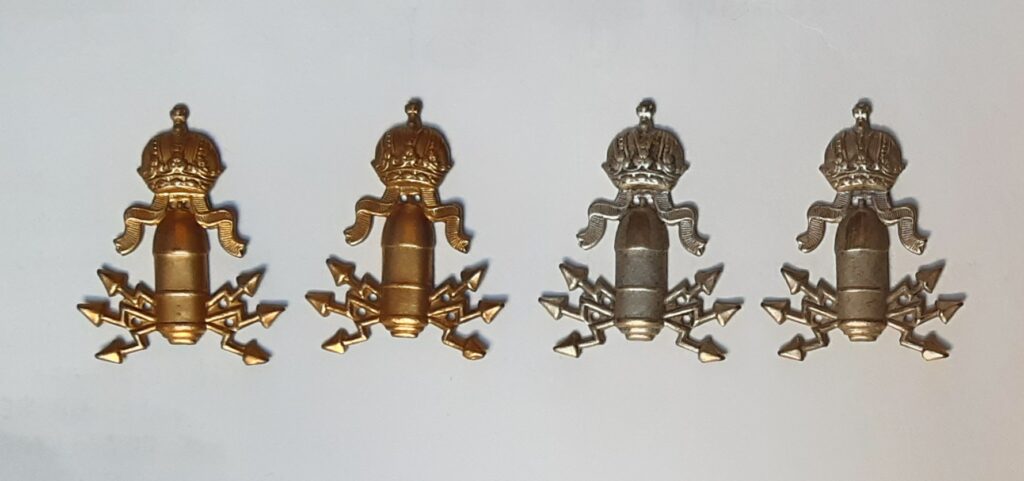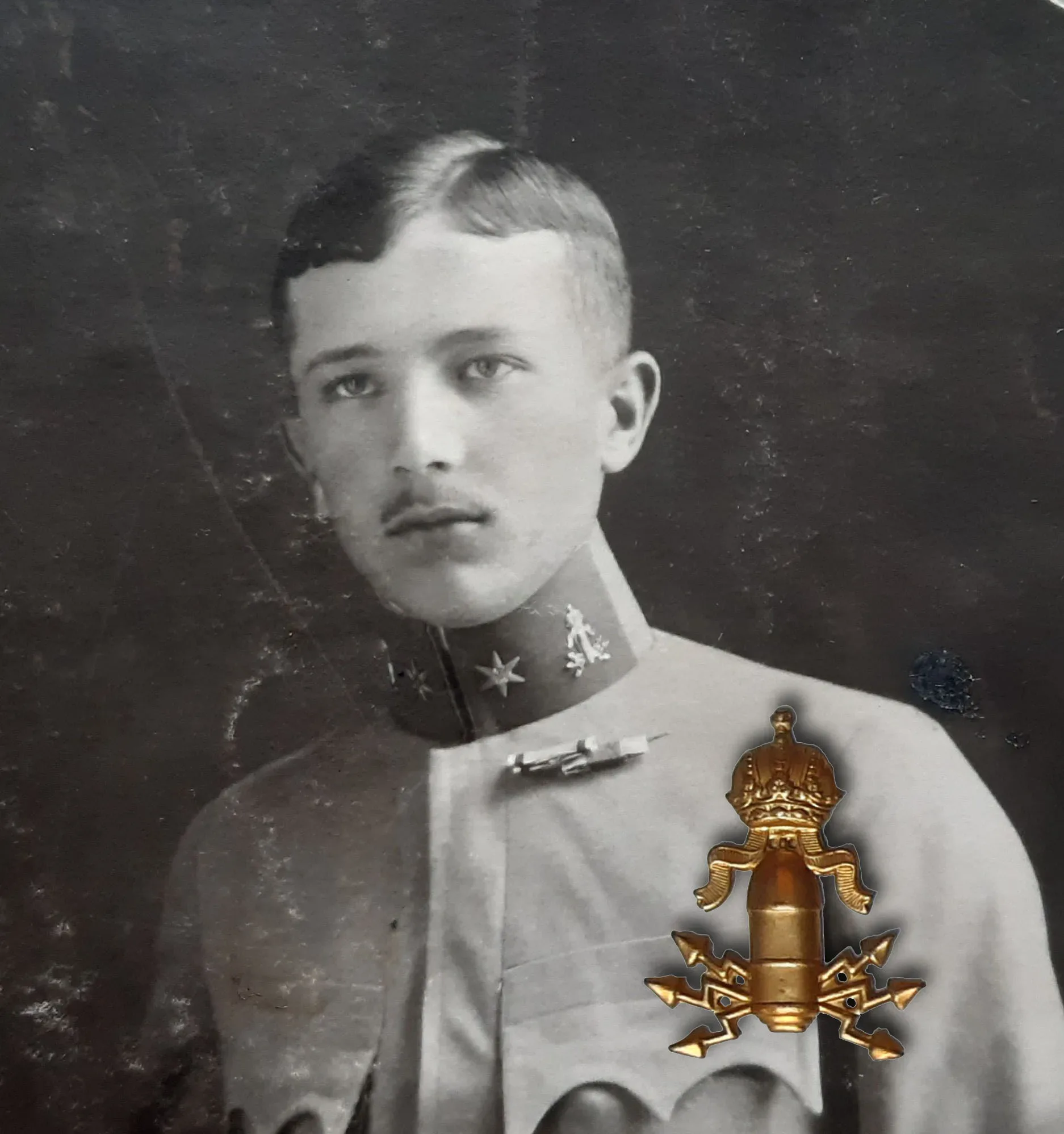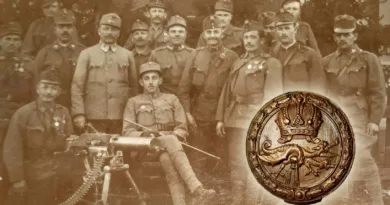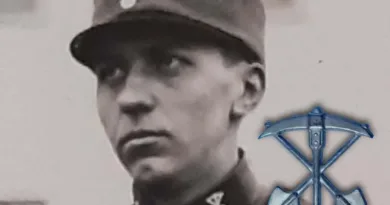Trench mortar troop insigna
I have already written twice on the site (here and here) about the construction, operation and battlefield application of trench mortars. My friend Gábor Széplaki wrote about the weaponry insignia related to this technique in his post.
The Hungarian Honvéd artillery started the First World War with 34 batteries, and as it progressed, to meet the legitimate needs of combat experience and artillery fire support, in the fifth year of the war, the number of batteries increased more than sevenfold and by 1918 it already had 249 batteries. Of these, 12 mortar batteries were in service, which accounted for nearly 5% of the artillery units.
At the end of the war, each infantry regiment included a technical company with three combat equipment platoons, the latter of which included four grenade launchers and four mortars. After the major reorganization of the Monarchy’s artillery in 1918, the mortar batteries were assigned to the field artillery regiments. According to the provision, each infantry division had an artillery brigade with two regiments, in which a total of two trench mortar batteries were assigned, with 12 to 16 guns per battery.
In Circular Decree No. 25256/eln 7 of the Hungarian Honvéd Command published on March 17, 1917, the wearing of metal troop insignia was ordered for the special formations of the Hungarian Royal Honvéd Troops. The decree ordered that all soldiers assigned to the grenade and mortar squadrons of the military technical infantry companies, to the artillery trench mortar batteries, and to the training courses that of these units, wear a metal troop badge on their collars and another on the left side of their caps. All other individuals who were active in grenade and mortar service, but did not belong to the staff of the above units, could only wear the insignia on the collar, and could wear the insignia of their own original unit on the left side of their cap.

The central figure of the insignia is a realistically depicted grenade, which is framed by lightning tied into three bunches at the bottom, and the imperial or the Hungarian holy crown at the top. There are two small holes under the crowns and 4 small holes between the lightning bolts for attaching to the uniform.
Crew and staff officers wore silver insignia, and officers and officials wore gold. Officers and officials could also wear the badge with gold or silver embroidery. The badges with the imperial crown were distributed to the soldiers of the joint troops and the Hungarian holy crown to those serving in the Hungarian Honvéd troops. Of the collar lapel insignia, I know only one design, and I have only come across the embroidered version in specialist literature and on foreign auction sites. Photos of contemporary wear are also very rare.

In the case of theHonvéd insignia, the ribbons of the Austrian imperial crown were also depicted incorrectly under the Hungarian holy crown, in the same way as in the case of the troop insignia of the search lighting units.




